I first met Allen Garns as he greeted me and my family on our first day at church in our new neighborhood in the fall of 2020. Although half of his face was hidden behind a mask, I could feel his smile and knew immediately that he was a kind man. He continued to support that impression through each following interaction; he became one of my biggest cheerleaders when I taught the adult Sunday School class. Knees shaking, whenever I brought more nuance or unique perspectives to my community’s generally conservative and traditional table, Allen and his lovely wife Diane gave me encouragement and expressions of gratitude. When I learned that he is a talented artist and illustrator, the desire to photograph him in his studio was immediately planted. It took me months (years?) to work up the courage to ask him, and then more months to follow through, and now more months to share, but I’m pleased to finally share this little collaboration with an incredible artist. In fact, the desire to make these photos also spurred me to create this very newsletter, and I hope to do future collaborations to highlight others in my community.
Allen has been a professional artist for more than 40 years, working as a freelancer for the first few decades. One of his main clients was the Church of Jesus Christ of Latter Day Saints, who hired him to do illustrations for their magazine, formerly known as the Ensign. Now, his days are filled with working on pieces he has been thinking of for years, including more faith-based works such as this one of Christ, and teaching at Scottsdale Artists School. As I photographed him, I asked him some questions about his art & career. In fact, I think I was more interested in our conversation and the photos took a slight back seat to that.
Art has been your only career, right? What has that been like? “I really have never had any other choice. It’s just what I’ve always thought of myself as and what I’ve done. There was a point when I went back to school, to BYU, after my mission…there was a point where I was so frustrated with my work, what I was doing in school. I was walking home from the Harris Fine Arts Center and I said ‘That’s it, I’m giving up, I’m going to quit art and study to become a Seminary teacher.’ But I had to finish the assignment, I didn’t want to just fail the class. So I went back the next day to work on it and it just kinda came together really well. So I thought ‘Maybe I’ll just stick with it.’ And I did.”
His mediums of choice: Oils, pastels, and pencils. He started with and became known for his pastel work, and has recently been teaching some workshops on that medium for use in portraiture.
Creativity has been a huge part of my life since my childhood and I think my parents really fostered that for me. Did your upbringing set you on a path to art? “We never had a lot of art around the house, but my dad was a photographer. He kind of fell into it, he was a fireman. He was always interested in stuff like photography and even drawing, but he never really had the time to pursue anything […] But he took a photography class in LA and after he’d been on the job for about 10 years, they started a photo and cinematography unit within the LA Fire Department. The guy in charge knew my dad knew a little about photography (when in reality he didn’t know that much) and he recruited him. So that’s what he did for the rest of his career.
“He taught us a lot about photography. In fact, in high school, that was my main thrust […]I think that had a big influence on my painting, on my artwork, because one thing that my dad taught both me and my brother about was light, lighting. Of course that is a real issue with photography if you’re going to be any good. In fact I was a yearbook photographer when I was a senior. My brother ended up being a professional photographer over in LA for 30 years before BYU finally convinced him to go up there to teach for a few years. My sister ended up an Interior Designer, so we all ended up in visual art fields.”
(Needless to say the pressure to photograph Allen well felt a little greater after learning this tidbit.)
So you grew up in LA and got married out there. What brought you to Arizona? “Diane is from Phoenix. Her dad had a rental house out here in Mesa and told us he’d give us a really good deal if we wanted to come out here.”
I find that I’m strongly influenced by my surroundings. Did you find that the change to Arizona affected your work at all? “Had I stayed in LA, things could have turned out differently. By the time we came out here, FedEx was a thing, so that didn’t change a lot with illustrating. Not being in the thick of things like I was in LA, my path could have been different[...]But even after moving here I still painted a lot of LA scenes[...] I’ve always liked the desert and so when we moved here I did start painting more desert landscapes. Overall, I was primarily an illustrator at the time and so I did whatever the client was asking for.”
On where he finds inspiration: “Most of my inspiration really comes from Art History. That’s where I look […] Caravaggio is someone you should know […] Largely because of the way he somewhat revolutionized painting. Painting had really become very manneristic toward the end of the Renaissance, and had very formal structures and everything. He came along with this sense of realism of things. The realism and the lighting that he did is what kind of blew people away. He was somewhat of an iconoclast in that he didn’t make everything as reverential as what everybody expected.”
We spoke more about Carvaggio and he showed me his work in an art book. I especially liked one of Matthew, from the New Testament, having his hand literally moved by an angel. Allen commented that the man looked a bit like a “country bumpkin” in his first iteration, and that the priest who commissioned the work made him re-do it. I liked the first version better because it beautifully captured the idea that God uses ordinary people to do important things.
I’m sure you’ve heard the concept of Imposter Syndrome. Is that something you’ve experienced? “I guess I don’t worry about it too much, it hasn’t affected me too much. I think a lot of artists I know, like everything you do, you wonder if it’s any good. I don’t know if I’d call it imposter or not but I find it sometimes really hard to just get going on work because of that. But finally I just start working and then I don’t worry about it anymore.”
(Me) It’s almost like that’s the creativity killer—the not doing.
“It is! I love the quote, maybe you’ve heard it, from a famous artist, I can’t think of his name just now: ‘Inspiration is for amateurs. The rest of us just get up in the morning and go to work.’ You go in and just start working and that’s when the inspiration comes.”
“Inspiration is for amateurs. The rest of us just get up in the morning and go to work. If you wait around for the clouds to part and a bolt of lightening to strike you in the brain, you are not going to make an awful lot of work. All the best ideas come out of the process; they come out of the work itself.” -Chuck Close
On his definition of success as an artist or illustrator: “Well as an illustrator I pretty much achieved what I wanted to there. I had a lot of work, had some really great jobs, and won some awards along the way. Right now it’s really just about trying to find a way to paint more about my faith and trying to find exactly where that is.”
What is your favorite part about being an artist? Or has that changed through the years? “I think it’s always been the times when you end up creating that is really beautiful or strong and just realize you made it. Sometimes that realization doesn’t come until later. Sometimes it never comes on pieces—a lot of pieces don’t really hit it. That and then closely related to that is when the work is just happening so intuitively and the painting kind of paints itself and you’re in that [flow]. That’s one of my favorite things about being an artist. And I like all this [gestures around his large, open studio]. I like having this kind of milieu to exist in.”
You mentioned wanting to explore your faith more through religious art. Religious art was my primary exposure to art in my home, aside from a few pieces of my mom’s. I think religious subject matter is important, but do you ever consider pieces like your landscapes to be another expression of your spirituality? “I think the act of creating is (or at least can be) a religious, spiritual act, particularly the pursuit of beauty. When I say that I’m not talking about prettiness because beauty can come in a lot of different ways. For me, it’s the beauty of light on form. That’s one of the main elements of my art and what I respond to. I’ve got this little painting that I just did of a pear in just some natural light coming through the window. The thing that happens in a situation like that is it takes it beyond just being a picture of a pear. When I said spiritual form, I don’t mean just ‘gospel’ spiritual, I mean taking things beyond just the obvious [physical form] of something—transcends somewhat the literal object.”
That’s been one of my biggest themes with my photography as well, even though the tools are different, noticing and trying to capture the light. Even as a child i remember seeing beautiful light and wishing I could remember it forever. Sometimes I will take a photo and sometimes it translates and sometimes it doesn’t, but I think that light has always been a powerful symbol to me of spirituality.
“Oh yeah definitely the whole idea of light is really inspiring to me and it relates a lot to how I perceive light and what I try to find in paintings.”
Allen brought up this quote during our conversation, by Dieter Uchtdorf: “The desire to create is one of the deepest yearngings of the human soul.”
I think creativity comes about in so many ways beyond traditional art. What are your thoughts on that? “My mom was not artistic visually, but she had the same kind of approach to cooking. She was always figuring out how better to do things and being pretty creative with that. We have a family quote we use because she always used to say ‘Oo, you know what would be good with this?’”
Relatedly, is there anything that you do or a hobby you have that’s not directly related to your art that brings you joy or satisfaction? “Cooking! I really like to cook. I like that and hiking. Not heavy-duty hiking, just getting out in the desert. I’m kind of a simple guy. Hanging out with my wife.”
Do you always paint from a reference photo? I know you’ve done plein air painting, but do you ever just paint something from your mind? “Not really. I draw sometimes in my sketchbook, but I pretty much only paint from observation. [Pulls out sketchbook.] These are all pretty much from observation. I did a large scale pastel from this sketch of Diane just sitting at the computer. These are some of this idea of seeking God, seeking light, seeking divinity.”
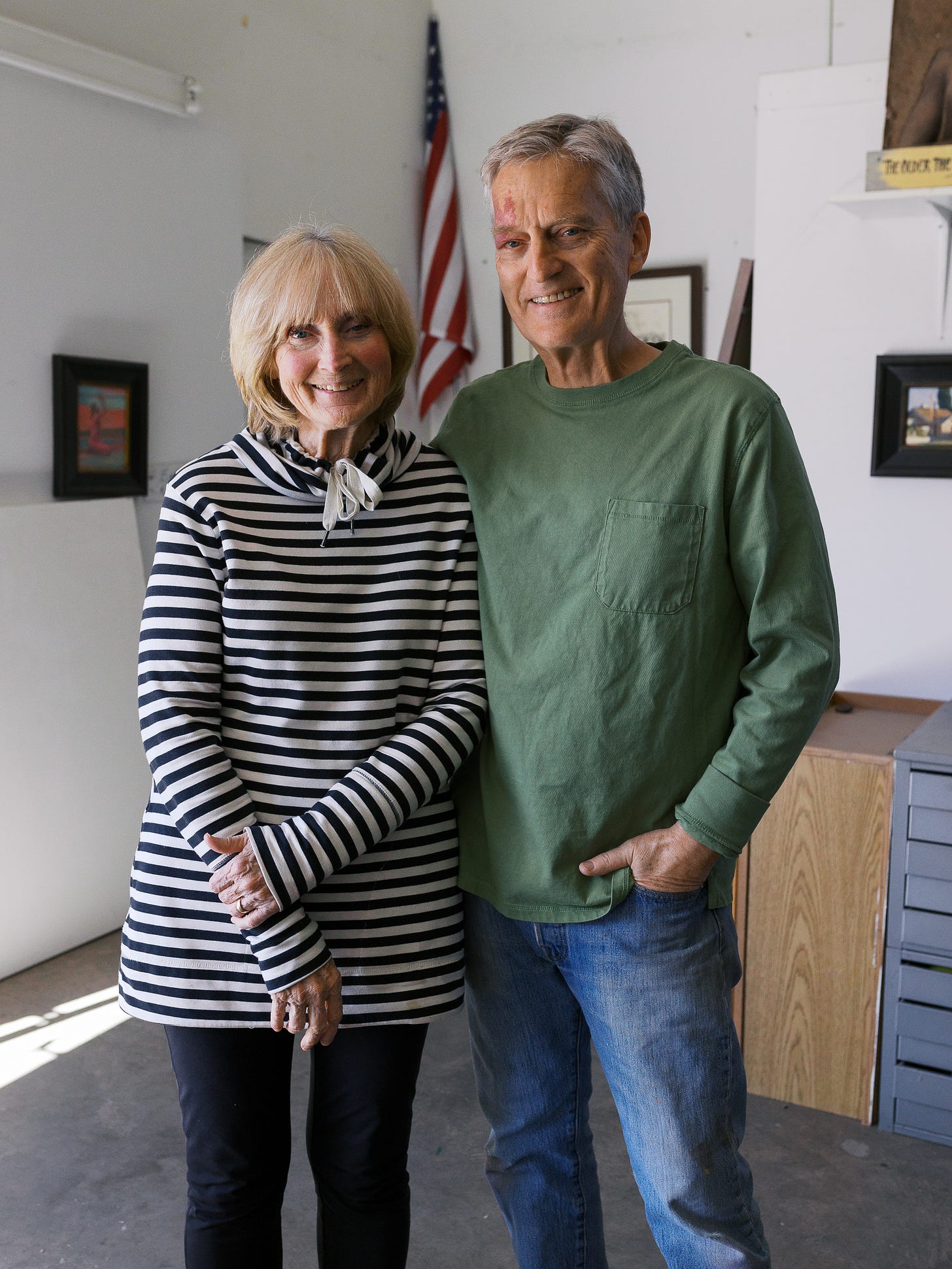
While my images are humble, the inspiration and conversation we shared was incredible. I hope you enjoyed this glimpse into this artist’s world. Find Allen here on Instagram or his website.





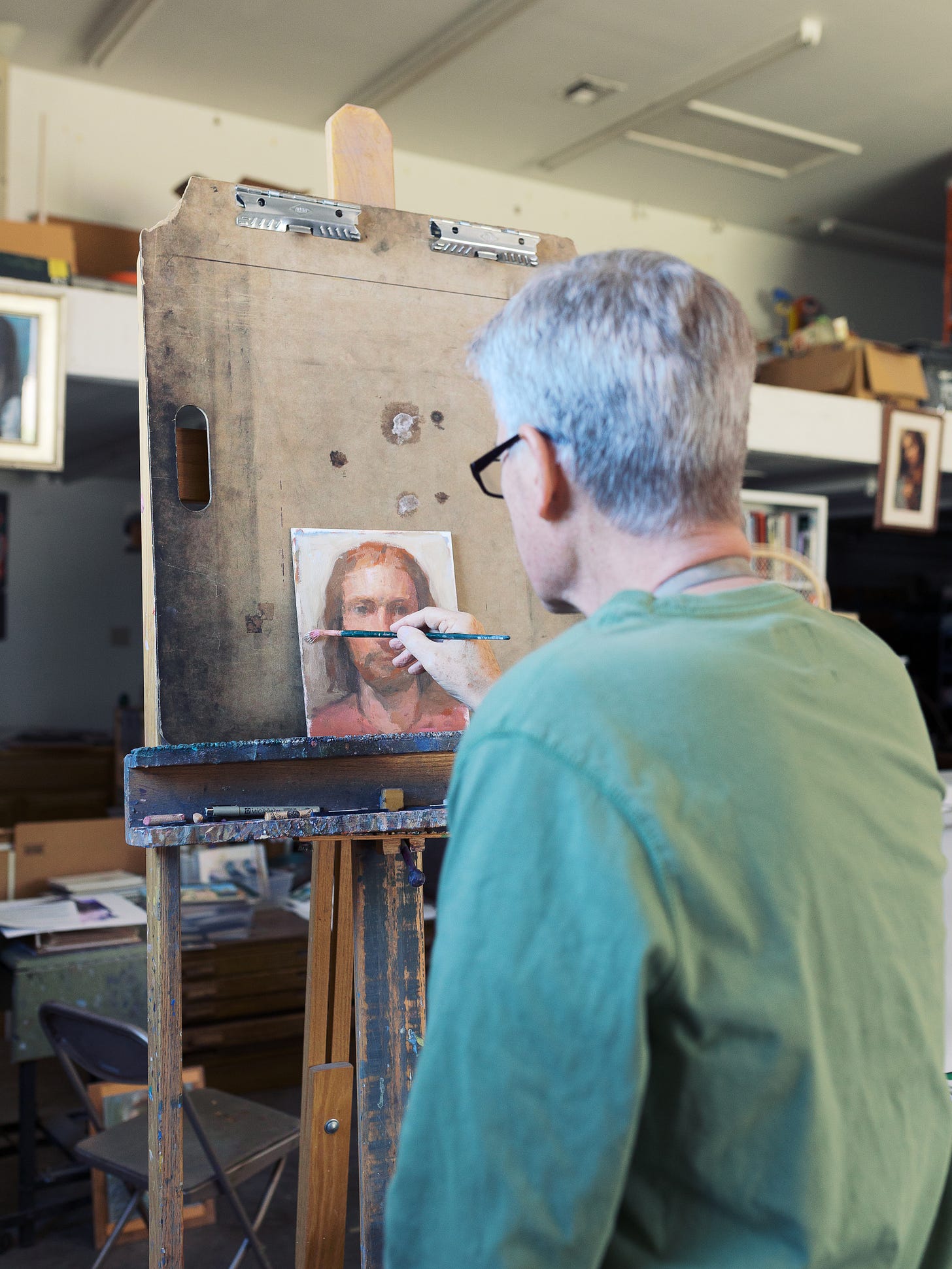

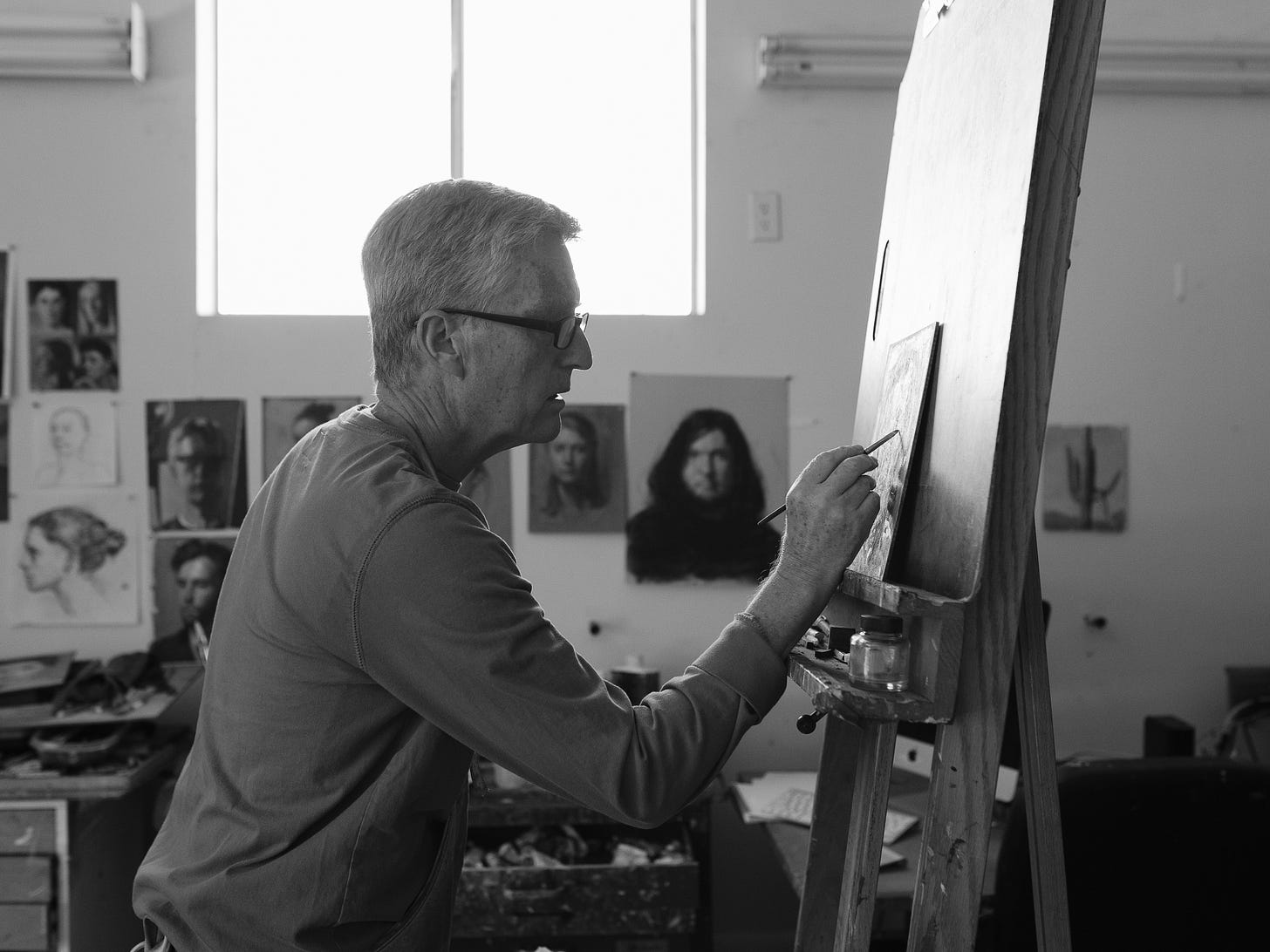
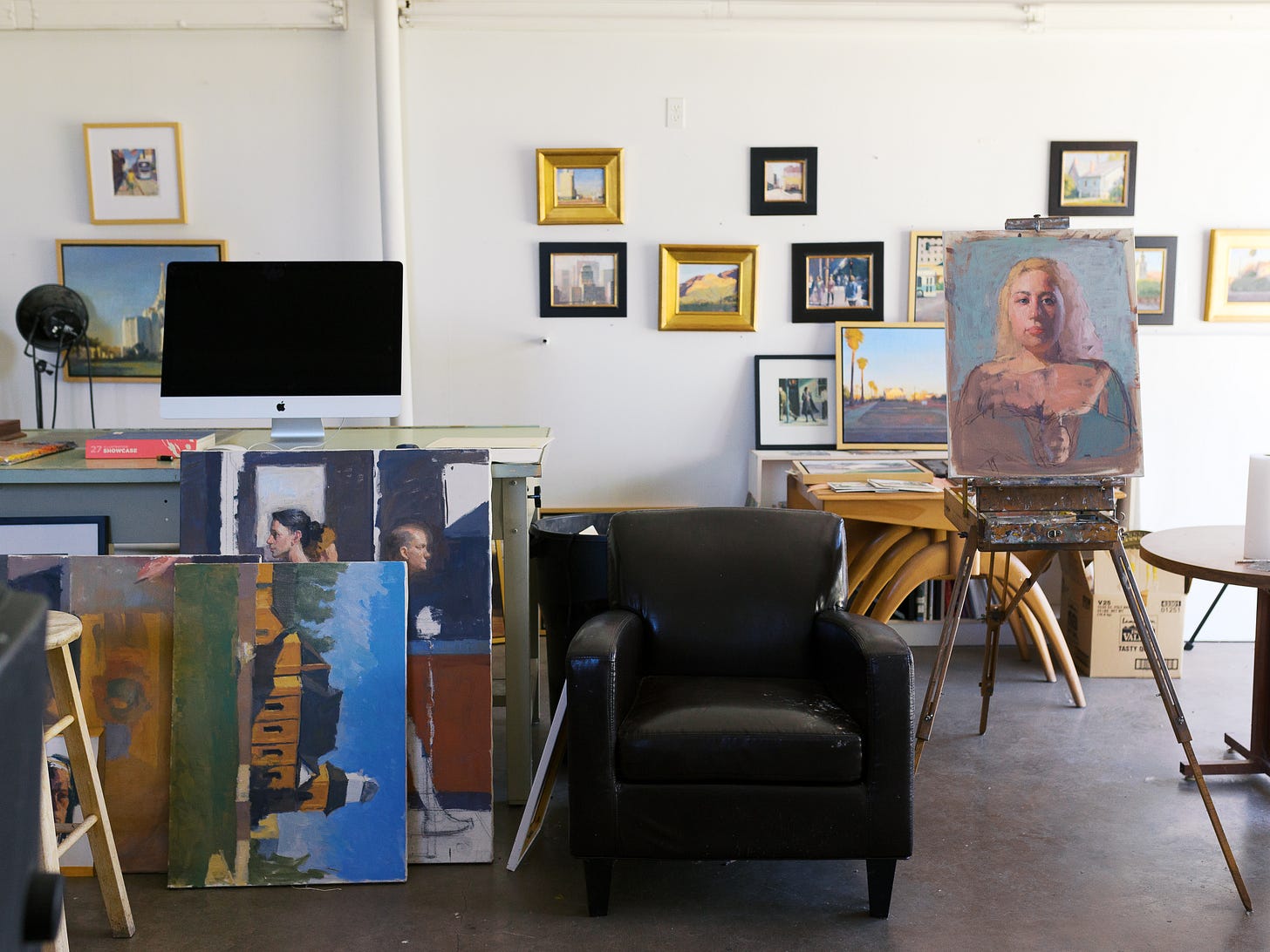
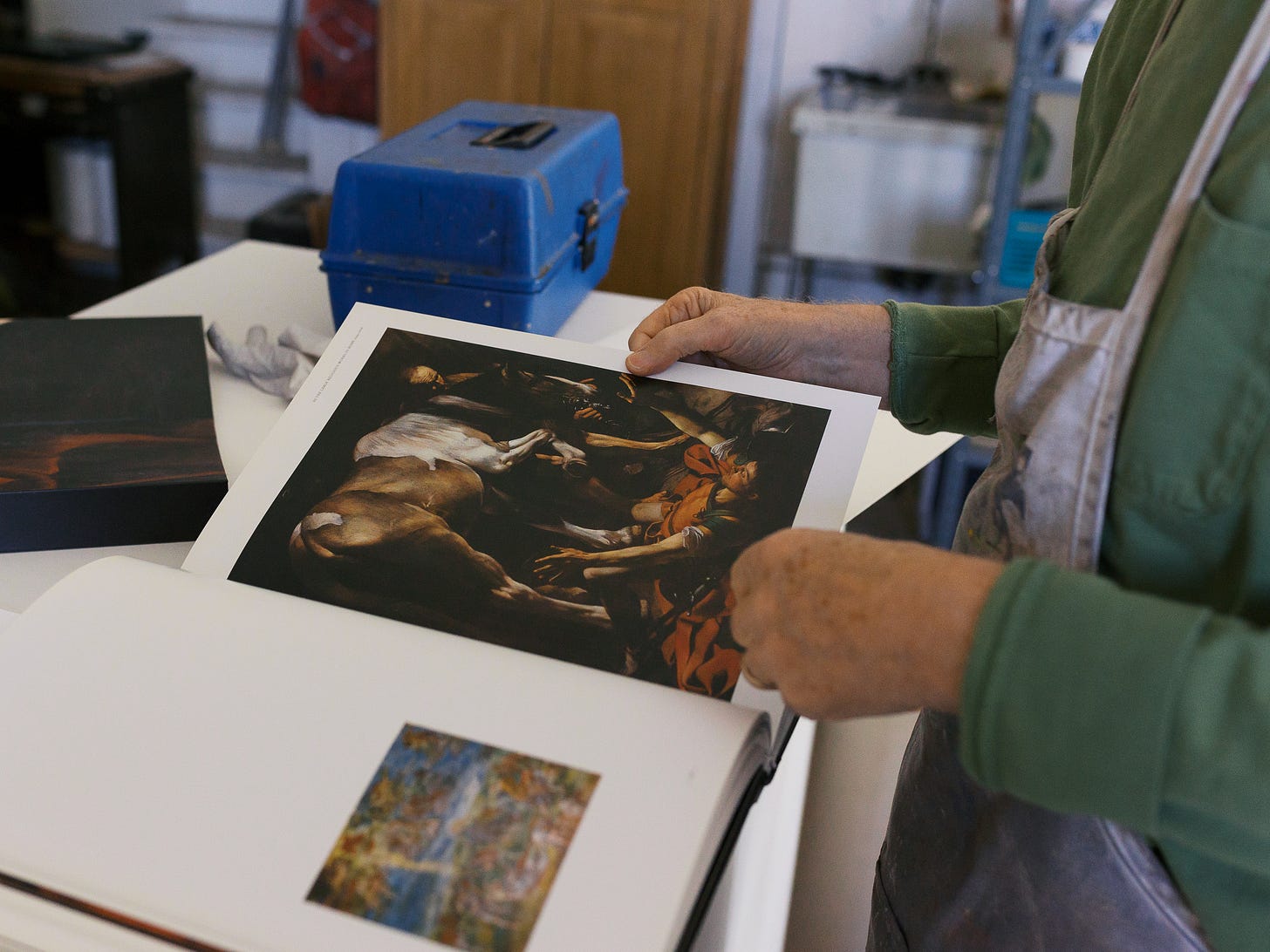
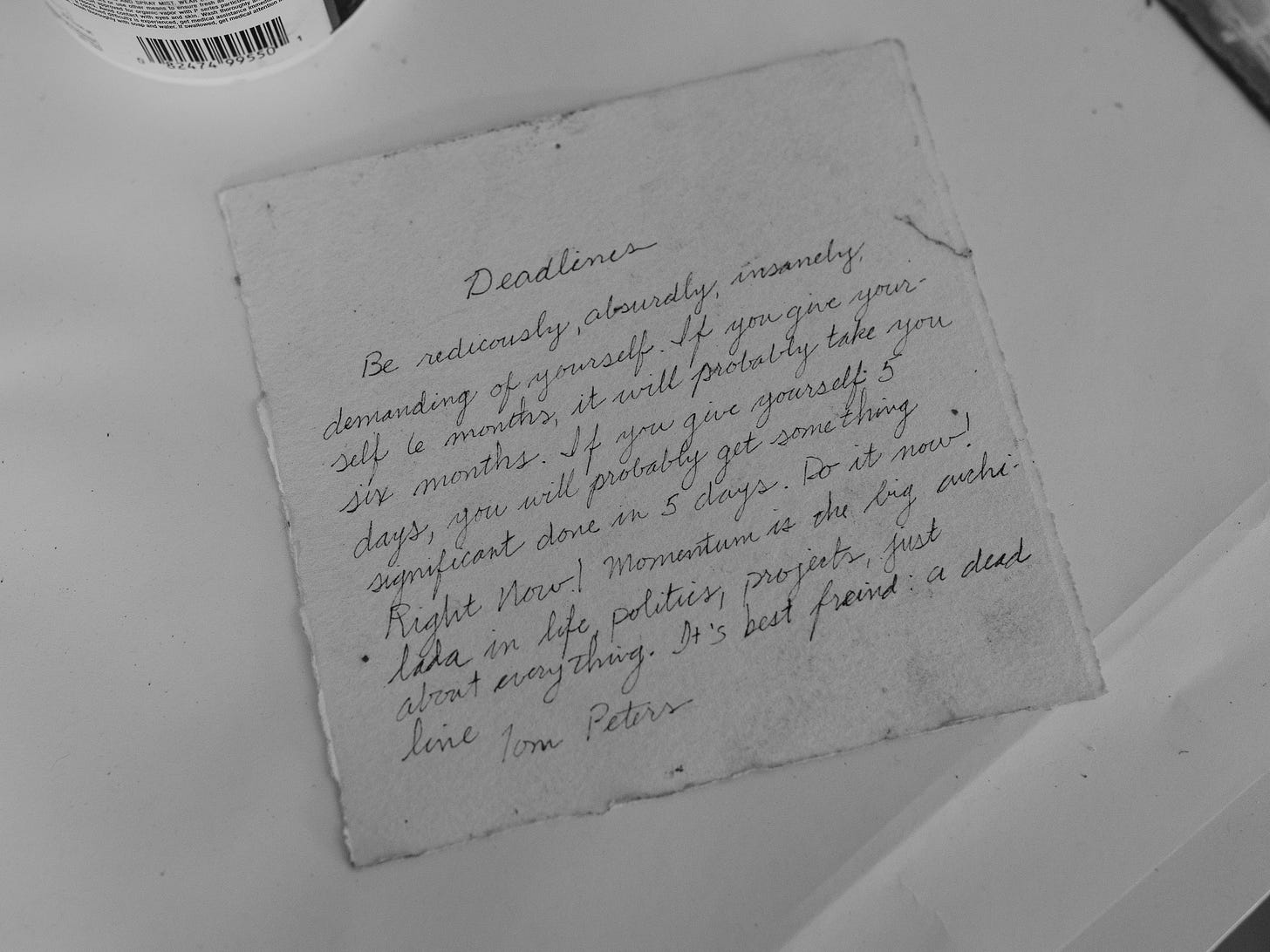
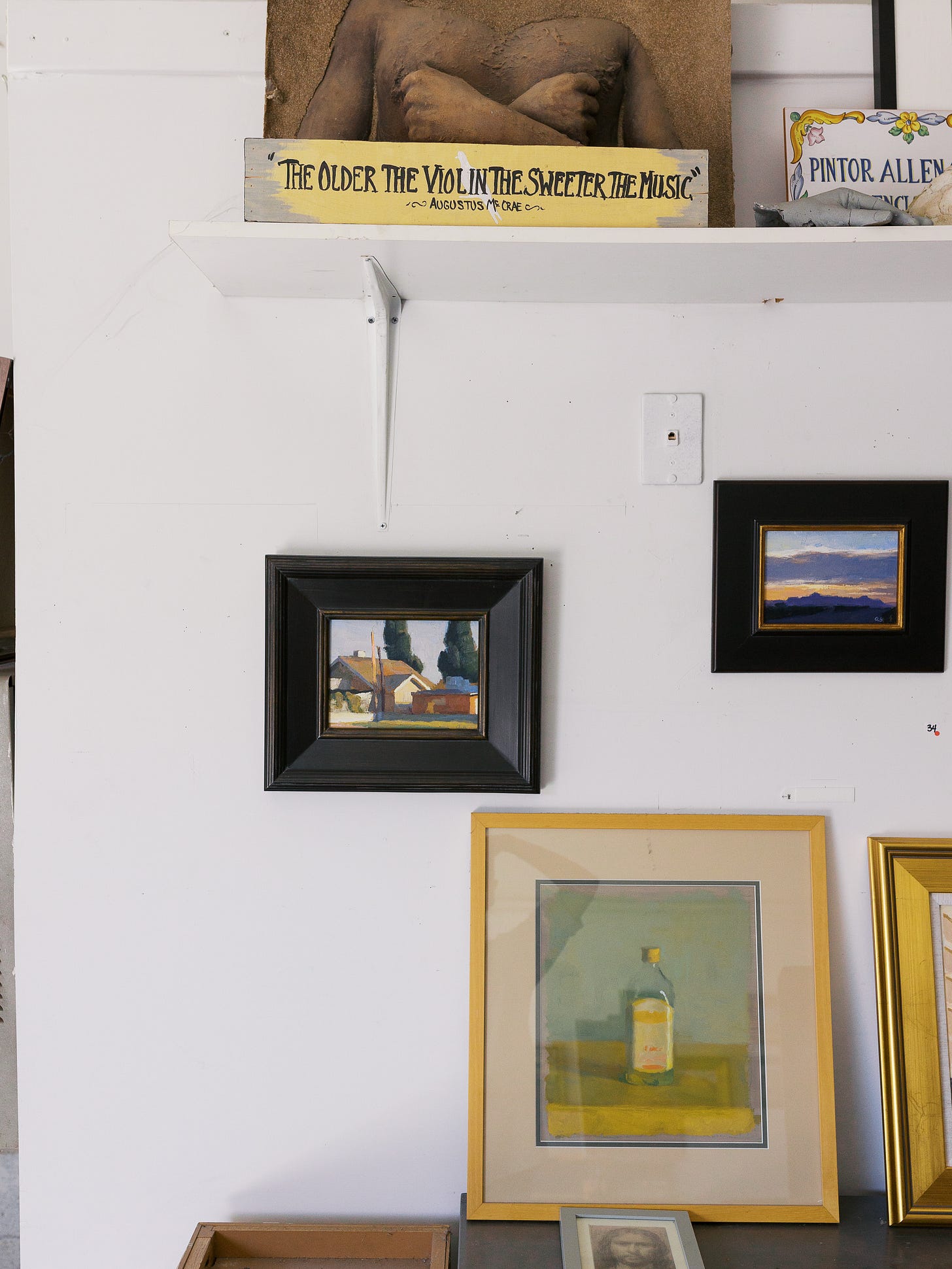
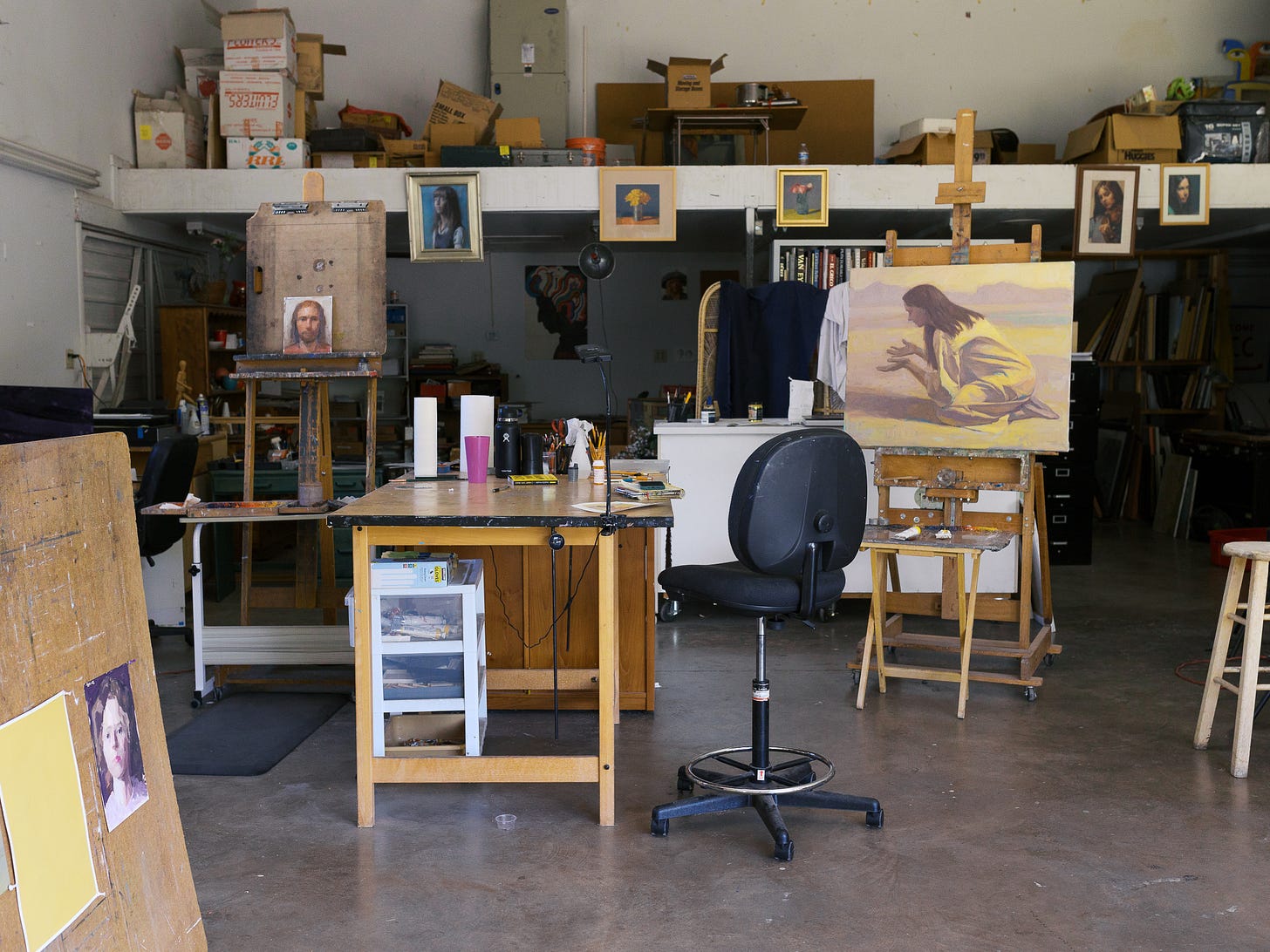

absolutely amazing 🩷🩷🩷🩷🩷